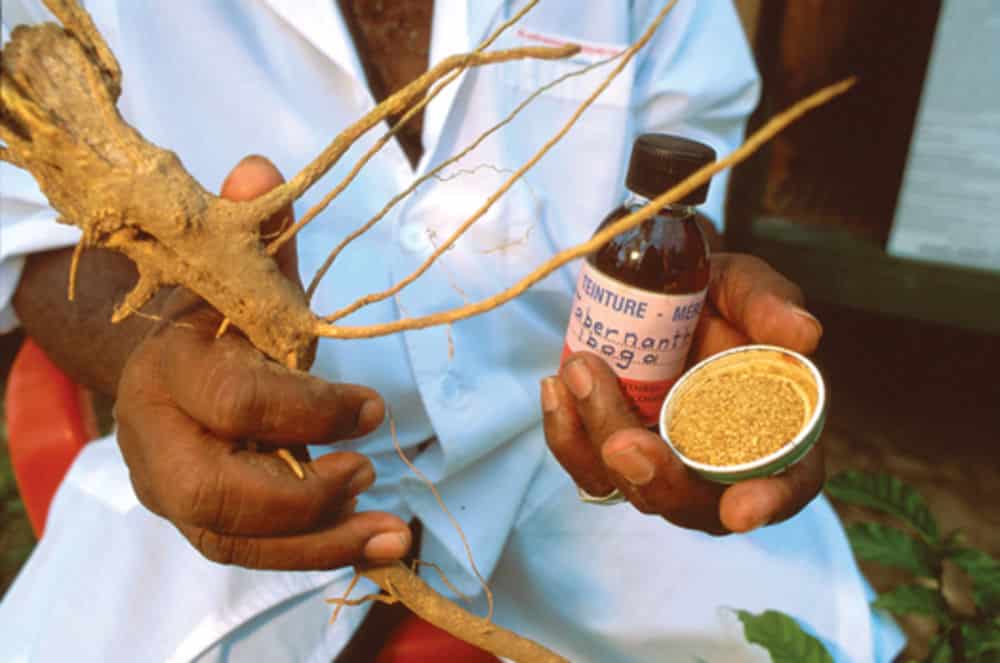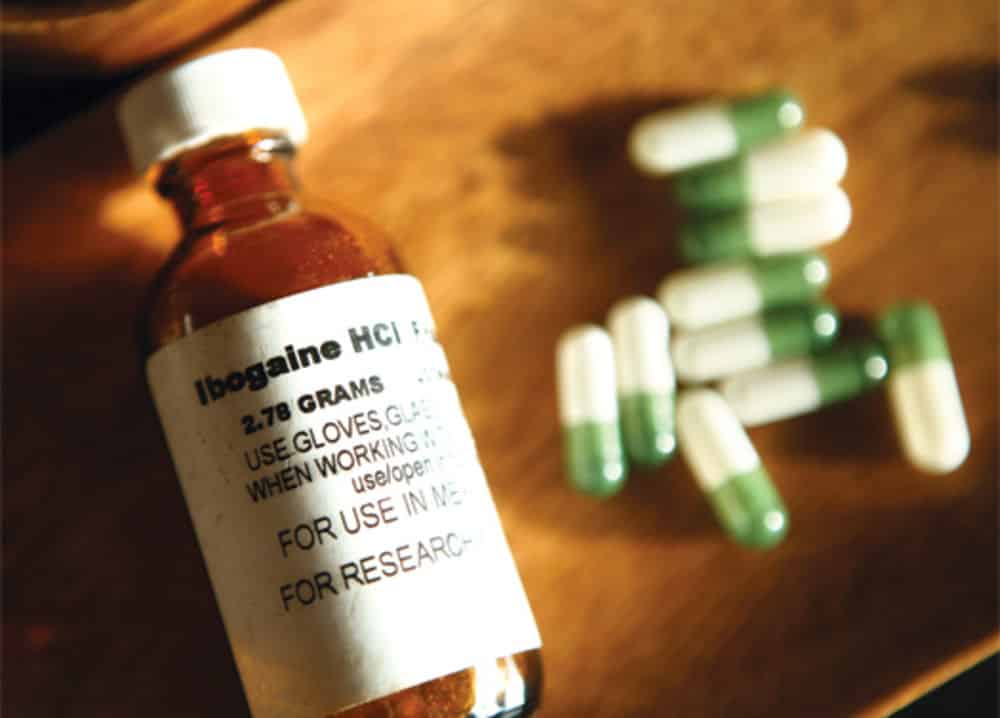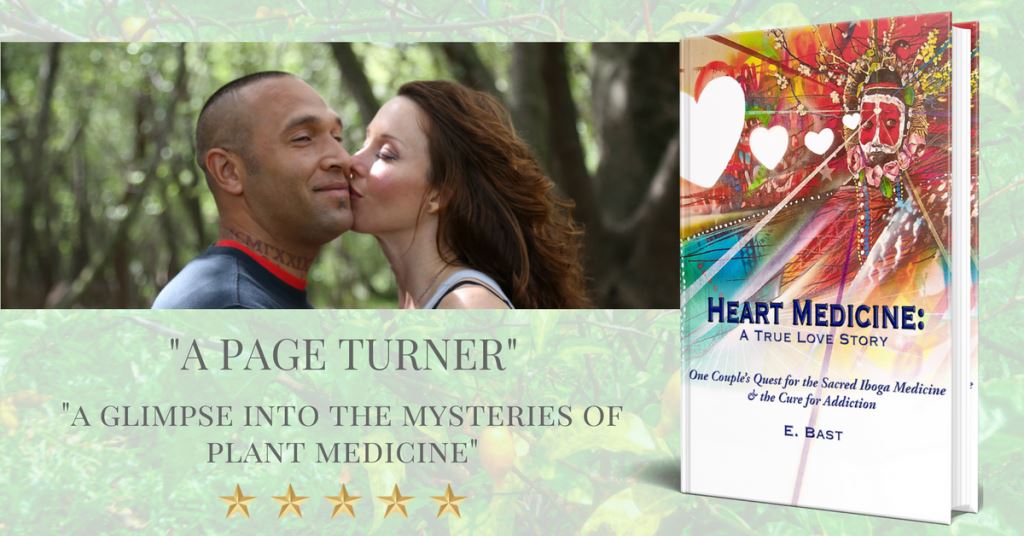Iboga Vs Ibogaine – Which Is Better for Addiction Treatment?

With global opioid abuse reaching record levels, opiate users are turning to an ancient and powerful plant medicine, that some say is many times stronger than ayahuasca in ceremonial doses, for healing.
Iboga is a visionary medicine held sacred by the indigenous people of Central West Africa. The name generally refers to the Tabernanthe iboga plant as well a broader group of perennial shrubs belonging to the Apocynaceae family, found in the tropical forests of Gabon, Cameroon, and the Republic of Congo. Seven common varieties of iboga are known throughout Gabon, where it is most abundant, though some findings suggest that many more varieties could exist in the highly biodiverse environment.
Iboga was first used by the Babongo people, originally semi-nomadic hunter-gatherers living in the deepest parts of the rain forest, also known as the Pygmy people. Without a written history, it is impossible to know exactly how long iboga has been utilized, though it is regarded as an ancient practice. The ritual use of iboga was passed on to the Dissumba and Missoko sects within the Bwiti tradition, known as the “study of life,” perhaps many hundreds or thousands of years ago. Most recently, the use of iboga was adopted by the Fang, a syncretic Christian and Bwiti religion. During colonial times, the Bwiti traditions endured brutal persecution by the French Christian missionaries and governmental authorities, and the use of iboga was largely hidden during that period.
MUST READ: Iboga Medicine – Psychedelic Healing the Bwiti Way
Traditionally, the largest doses of iboga are taken in spiritual initiations, marking the passage into adulthood and/or for healing purposes. Lighter doses are used as a stimulant, hunting aid, aphrodisiac, and sacrament in various community ceremonies. The Babongo and Bwiti people regard the traditional music and other elements of ceremony as essential to support the full potential of healing and awakening that iboga offers.
Iboga and ibogaine are both known for spiritual exploration, psychotherapeutic healing, rapid physical detoxification, and addiction recovery. Promising results have also appeared in the treatment of a number of other conditions including Parkinson’s disease. The two medicines share some similarities, but there are distinct differences in both content and context.
Anyone who searches for iboga or ibogaine on the internet will find some tragic stories of “ibogaine related” deaths, however, according to a study presented by Dr. Kenneth Alper examining cases between 1992 – 2008, it was found that the deaths were caused by additional factors: contraindicated medical or psychiatric conditions (insufficient medical screening), contraindicated drugs or medications, improper dosing, inexperienced providers, self administration, or adulterated medicine.
There are actually three forms of the medicine to consider: iboga root bark, total alkaloid iboga extract, and ibogaine…
Which is Better for Addiction Treatment?
Iboga Root Bark
Iboga is the natural plant, containing the ibogaine alkaloid as well as 11 other known alkaloids. The root bark is the part of the plant that is psychoactive; it can be taken as fresh shavings, powder, tea, or a highly concentrated natural total alkaloid extract. Iboga is most often administered in a ceremonial setting by traditional Bwiti providers, with some exceptions.
While a traditional Bwiti ceremony with iboga many have many lasting benefits to participants because of the cultural and spiritual context, both medical and traditional treatment centers find it difficult to facilitate a thorough drug detox working solely with root bark.
A tremendous amount of iboga root bark is consumed in a traditional initiation ceremony or drug detox, sometimes dozens of teaspoons—depending on the individual tolerance. Ingesting so much of the bitter, fibrous root can be extremely difficult for anyone to stomach, especially in the midst of drug dependence. Vomiting is more common with these larger doses of root bark, and medicine that is quickly purged will not be effective for a detox process. Furthermore, dehydration resulting from excessive purging is an additional risk factor for dangerous cardiac arrythmias. However, the root bark can be a good supplement in a detox process with the total alkaloid extract (see below), and follow up ceremonies with the root bark can be supportive for long term abstinence and well-being.
Bear in mind, not all traditional providers will be experienced with drug detox, and they may not be aware of the contraindicated medical conditions or medications, many of which may be unique to Westerners. It is important to research a provider’s experience and track record specifically with regards to drug detox and addiction recovery.
As iboga is an organic substance, it can vary greatly in quality and potency, and it cannot be dosed by body weight, making dosage difficult for inexperienced providers or facilitators who are trained in the medical model. Traditional providers have alternative methods of dosing, as noted for the total alkaloid extract.
MUST READ: How A Powerful Psychedelic From Africa is Curing Opioid Addiction…& the U.S. Doesn’t Care
Total Alkaloid Extract
Traditional providers and some medical model providers who offer drug detoxes may utilize a total alkaloid extract form of iboga. It is highly concentrated; one capsule may contain the equivalent of five to six teaspoons of root back powder. Thus, it is much easier to ingest than root bark. The extraction process is highly delicate, not only to create a pure and potent medicine, but also to keep the iboga plant spirit in the material—according to traditional shamans experienced with this form of the medicine.
In order to lower the risk of adverse medical events, some traditional providers may require total abstinence or weaning down from some harmful or contraindicated drugs for a period of two to four weeks prior to taking the medicine. However, even after an initial period of abstinence, iboga still offers a valuable experience to people in recovery from drug addiction by resetting the receptor sites, providing a deeper detox, eliminating cravings, uplifting with antidepressant effects, and healing the root causes of addiction. Consult with a qualified provider to determine the best medical protocol for your unique situation.
Up to 65% of the TA (total alkaloid extract) consists of ibogaine, and there are at least 11 other alkaloids that have been identified, many of which have been discovered to have healing properties. Some of these additional iboga alkaloids have independently been shown to interrupt substance use disorders. Two of the alkaloids have been studied for treating pain: Tabernanthine and Ibogaine. The various alkaloids appear to act as potentiators or activators for each other, creating a holistic and synergistic effect. These are reasons why the TA can be more useful than Ibogaine alone.
Like the iboga root bark, the total alkaloid extract cannot be dosed by body weight. Proficient providers using TA will have been trained to dose in progressive increments based on the careful observation of physiological and psychological effects.
Only mature iboga plants (minimum of seven years old) will create TA medicine potent enough to provide a drug detox.
Though traditional providers may not have data organized according to standard scientific methods, many people have reported powerful and positive results utilizing the total alkaloid extract and traditional facilitation for drug detox and addiction recovery.
MUST READ: 7 Life-Saving Safety Tips for Addiction Treatment with Iboga & Ibogaine

Ibogaine
Ibogaine hydrochloride is a pharmaceutically produced semi-synthesized extract of one alkaloid, isolated from the spectrum of other naturally occurring iboga alkaloids. Some ibogaine may be produced from from a different plant called Voacanga africana rather than the Bwiti sacrament known as Tabernanthe iboga. Ibogaine is most often administered in a medical and psychotherapeutic setting, with some exceptions.
Ibogaine considerably easier for providers trained in the medical model to administer because it generally has a standard potency with 95-99% purity, and dosages can be controlled according to body weight. A typical ibogaine treatment involves doses of about 15-20 mg per kg of body weight.
Ibogaine may be more appropriate for seekers who feel comfortable in a medical model setting vs. a shamanic one. Ibogaine is most often administered with a precautionary IV in place and heart monitoring throughout the process. Top quality ibogaine treatment centers may sometimes be better equipped to handle complex medical emergencies, though such events are rare with good medical protocol and initial intake screening.
Ibogaine passes through your system more quickly, in about 14-24 hours, leaving less of an afterglow effect, but also shorter recovery time.
One Bwiti nganga (shaman) who personally tested ibogaine expresses that though the refined ibogaine may have some level of medical benefit, it is lacking the iboga plant spirit that is responsible for the deeper spiritual healing work. He stresses that it is important to understand the traditional ways of working with this plant spirit in order to access the full potential of the medicine. This may be an important point to consider for those who value indigenous ways of knowing and healing.
Some people have found value in an initial detox with ibogaine followed later by experiences with the total alkaloid medicine in traditional Bwiti ceremonies.
MUST READ: 7 Steps to Finding a Qualified Iboga or Ibogaine Provider
In Summary
Iboga and ibogaine are powerful psychedelics with low abuse potential; neither are conducive to a “recreational” experience. The visionary journeys are generally mentally, emotionally, and physically intense, though outcomes can be positive. Both are highly effective in eliminating addiction cravings and promoting drug abstinence, when high quality medicine is skillfully administered by a qualified provider.
Iboga, the total alkaloid extract, and ibogaine each have unique pros and cons for different individuals. Ultimately, choosing iboga or choosing ibogaine will depend on the kind of experience you want. If you are are experiencing opiate addiction and withdrawal symptoms, and want addiction treatment, pure ibogaine in a clinical setting or total alkaloid extract in a traditional setting may be the best solution for you. If you want to have a deep cultural experience where you commune with the tree of life and receive guidance from your ancestors, a traditional iboga initiation in Gabon may be the best fit. A seeker may want to consult with multiple prospective providers, read online reviews, and spend some time in careful contemplation before making a decision.
Whatever form of the medicine you choose, your preparation, full participation, and integration of the experience will help you to receive the full benefit of the medicine work. It is essential to consider pre-ceremony coaching and aftercare support with qualified providers who are educated about the medicine, such as progressive therapists and the professional coaches at Being True to You. Also helpful is finding community support through entheogenic medicine education organizations such as E.R.I.E. & the Aware Project.
Featured Photo by Laurent Sazy


Hello,
this post is really really cool and this iboga and ibogaine information is very useful.